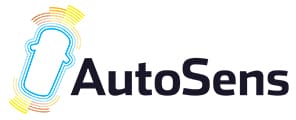AUTOSENS USA 21-23 MAY 2024 | HUNTINGTON PLACE, DETROIT
AutoSens USA 2024 Agenda
Check-in Opens from 9:30am *For Full Pass Holders Only
- Tuesday 21st May
- 9:30am EDT
- 10:00am EDT
- Tuesday 21st May
- 141
Mixed-Flow Traffic of CAVs and HDVs
(For full pass holders only)
Tutorial
Speaker(s)
- 10:00am EDT
- Tuesday 21st May
- 142 A-B
Thermal Imaging: From Planck’s Law to ADAS Performance Improvement
(For full pass holders only)
Tutorial
- 14:00pm EDT
- Tuesday 21st May
- 141
ICAT: An Open Source Testbed for Connected and Autonomous Vehicles
(For full pass holders only)
Tutorial
- 14:00pm EDT
- Tuesday 21st May
- 142 A-B
Camera Image Quality for ADAS – How Good is Good Enough?
(For full pass holders only)
Tutorial
Basic Passes Check-in Opens / Exhibition Opens
- Tuesday 21st May
- 16:30pm EDT
- 17:40pm EDT
- Tuesday 21st May
- Exhibition Hall
Welcome Reception in Exhibition
Check-in and exhibition opens
- Wednesday 22nd May
- 08:15am EDT
- 08:45am EDT
- Wednesday 22nd May
- Main Stage
Opening Remarks
- 09:00am EDT
- Wednesday 22nd May
- Main Stage
OPENING KEYNOTE – The Challenge of Moving to Smaller Pixels
Keynote
- 09:30am EDT
- Wednesday 22nd May
- Main Stage
On the Topic of Defining an AD Product with all Surrounding Stakeholders
Keynote
- 10:00am EDT
- Wednesday 22nd May
- Main Stage
KEYNOTE – New Camera Quality Measurements for Optimizing Machine Vision Systems
Keynote
- 10:30am EDT
- Wednesday 22nd May
- Exhibition Hall
Networking Coffee Break in Exhibition
- 11:00am EDT
- Wednesday 22nd May
- 140F
Press Briefing AutoSens
Thermal Imaging: Seeing the Unseen
- 11:15am EDT
- Wednesday 22nd May
- Main Stage
Unlocking Pedestrian Safety with Automotive Night Vision.
Presentation
Deep Learning and Machine Learning
- 11:15am EDT
- Wednesday 22nd May
- 141
An Efficient ADAS Stack: Integrating Multitask Models, Efficient Implementations, and Hardware Aware Optimization
Presentation
Data Analytics and Simulation
- 11:15am EDT
- Wednesday 22nd May
- 142 A-B
Accelerate and Scale AV Simulations on AWS
Presentation
Blending InCabin and Exterior Experiences
- 11:15am EDT
- Wednesday 22nd May
- 142 C
An Optical Nervous System to Interconnect Sensors and Artificial Brains in AV
Presentation
Thermal Imaging: Seeing the Unseen
- 11:40am
- Wednesday 22nd May
- Main Stage
Elevating Safety in the Dark: Unleashing the Potential of Nighttime AEB Performance with Thermal Sensing
Presentation
Deep Learning and Machine Learning
- 11:40am EDT
- Wednesday 22nd May
- 141
The Significance of Iterative Understanding of ML Datasets: Quality, Model Performance, and Actionable Insights
Presentation
Blending InCabin and Exterior Experiences
- 11:40am EDT
- Wednesday 22nd May
- 142 C
Vehicle Computing: A New Era for Automotive Industry
Presentation
Thermal Imaging: Seeing the Unseen
- 12:05am EDT
- Wednesday 22nd May
- Main Stage
Lighting Up the Dark: How New PAEB Safety Requirements can be met in the most Economical way by Combining Next Generation Thermal Imaging Optics and Sensors
Presentation
Data Analytics and Simulation
- 12:05am EDT
- Wednesday 22nd May
- 142 A-B
Next-Gen Autonomous Vehicle Testing: The Transition to Software Defined Vehicles & Late Sensors Fusion Through Physically Accurate Sensor Simulation
Presentation
Blending InCabin and Exterior Experiences
- 12:05am EDT
- Wednesday 22nd May
- 142 C
Hazard Awareness Detection Through Visual Fusion for Collision Avoidance
Presentation
Thermal Imaging: Seeing the Unseen
- 12:30am EDT
- Wednesday 22nd May
- Main Stage
AI- boosted LWIR imaging – Diffusion Models Can Improve LWIR Image Classification Where Training Data is not Available
Presentation
Data Analytics and Simulation
- 12:30am EDT
- Wednesday 22nd May
- 142 A-B
Meeting the Growing Demand for High-quality Training Data Through an Integrated Simulation Solution
Presentation
- 12:55am EDT
- Wednesday 22nd May
- Exhibition Hall
Networking Lunch Break
Park Assist & Low-Speed Maneuvers
- 14:30pm EDT
- Wednesday 22nd May
- Main Stage
Mastering Self-Parking: Navigating the Challenges with Innovative Driver Assistance Technologies
Presentation
AI for AVs: Paving the Way for Autonomous Vehicles
- 14:30pm EDT
- Wednesday 22nd May
- 141
AI in Automotive: Accelerating Automated Driving Technologies
Presentation
Image Sensing Innovations
- 14:30pm EDT
- Wednesday 22nd May
- 142 A-B
4×4 RGBC: A CFA with the Best of Bayer and RCCB
Presentation
Sensor Fusion: The Power of Integration
- 14:30pm EDT
- Wednesday 22nd May
- 142 C
Detecting the Unsafe Unknowns – How a Complementary Perception Channel Enables Safe Automated Driving
Presentation
Park Assist & Low-Speed Maneuvers
- 14:55pm EDT
- Wednesday 22nd May
- Main Stage
The Advantages of Implementing Smart Parking Systems
Presentation
AI for AVs: Paving the Way for Autonomous Vehicles
- 14:55pm EDT
- Wednesday 22nd May
- 141
How Cameras Read the Road
Presentation
Image Sensing Innovations
- 14:55pm EDT
- Wednesday 22nd May
- 142 A-B
Camera Simulation Pipeline in the context of Exterior Camera (side mirror); Case Study of E-Mirror
Presentation
- 14:55pm EDT
- Wednesday 22nd May
- 142 C
Visual Harmonization Metric of the Multi-camera Visualization in Automotive Surround View Systems
Presentation
Park Assist & Low-Speed Maneuvers
- 15:20pm EDT
- Wednesday 22nd May
- Main Stage
Advantages of Radar in Automated Parking
Presentation
Speaker(s)
AI for AVs: Paving the Way for Autonomous Vehicles
- 15:20pm EDT
- Wednesday 22nd May
- 141
The Next Era of Vision-Based Intelligent Driving
Presentation
Image Sensing Innovations
- 15:20pm EDT
- Wednesday 22nd May
- 142 A-B
Expanding the Wavelength Range of ADAS/AD Cameras
Presentation
Sensor Fusion: The Power of Integration
- 15:20pm EDT
- Wednesday 22nd May
- 142 C
ADAS Scenario-Based Testing: Transfer Learning from Virtual to Physical Scenarios
Presentation
Speaker(s)
- 15:55pm EDT
- Wednesday 22nd May
- Exhibition Hall
Networking Coffee Break in Exhibition
Functional Safety
- 16:40pm EDT
- Wednesday 22nd May
- Main Stage
How Existing ADAS Sensors Can Support Measurable Safety Based on Ground Truth
Presentation
Market Forces and Horizon Scanning
- 16:40pm EDT
- Wednesday 22nd May
- 141
Advancing Autonomy: The Future of Vehicle Technology
Presentation
Driving Vision: Innovations and Standards in Automotive Safety Imaging
- 16:40pm EDT
- Wednesday 22nd May
- 142 A-B
Automotive Use Case Studies for Long Distance and Night Object Detection Using Latest Image Sensor Cameras
Presentation
Functional Safety
- 17:05pm EDT
- Wednesday 22nd May
- Main Stage
Methodology and process for Safety case creation and Maintenance of a Safety system
Presentation
Market Forces and Horizon Scanning
- 17:05pm EDT
- Wednesday 22nd May
- 141
Semiconductor Scarcity and ADAS: Rethinking Automotive Sourcing for a Resilient Future
Presentation
- 17:05pm EDT
- Wednesday 22nd May
- 142 A-B
Pioneering Next-Generation Deep Ultrasound for Autonomous Mobility
Presentation
What could we learn from..?
- 17.05pm EDT
- Wednesday 22nd May
- 141
What Can Passenger Vehicles Learn from Trucking?
Presentation
Functional Safety
- 17:30pm EDT
- Wednesday 22nd May
- Main Stage
Panel Discussion: Future-Proofing Functional Safety Strategies for Emerging Technologies and Compliance Demands
Panel Discussion
Moderator
Speaker(s)
Market Forces and Horizon Scanning
- 17:30pm EDT
- Wednesday 22nd May
- 141
Panel Discussion: How do we Ensure L3-4+ Cars are Insurable?
Panel Discussion
Moderator
Consultant,
Speaker(s)
Driving Vision: Innovations and Standards in Automotive Safety Imaging
- 17:30pm EDT
- Wednesday 22nd May
- 142 A-B
Panel Discussion: Standards for Safety: The Crucial Role of IEEE P2020 Automotive Image Quality Working Group
Panel Discussion
Moderator
Speaker(s)
Image Engineering
What could we learn from..?
- 17:30pm EDT
- Wednesday 22nd May
- 142 C
Panel Discussion: What can Automotive learn from the Military?
Panel Discussion
Moderator
Speaker(s)
- 18:15pm EDT
- Wednesday 22nd May
- Exhibition Hall
Evening Networking Reception inc. Speed networking
Check-in and exhibition opens
- Thursday 23rd May
- 08:30am EDT
Centralised In-Vehicle Architecture
- 09:00am EDT
- Thursday 23rd May
- Main Stage
System on Chip (SoC) for the Software Defined Vehicle
Presentation
Infrastructure, V2X, and Connectivity: Creating a Seamless Ecosystem
- 09:00am EDT
- Thursday 23rd May
- 141
The Future of V2X (and the potential impact of SAE J3216)
Presentation
Speaker(s)
Advancements in Image Quality
- 09:00am EDT
- Thursday 23rd May
- 142 A-B
Image Pre-processing for DNNs in ADAS and Autonomous Vehicles Applications with Safety and Image Quality In Mind
Presentation
What's next for RADAR?
- 09:00am EDT
- Thursday 23rd May
- 142 C
How to Keep Improving Radar Resolution without Adding more Antenna
Fireside Chat
Centralised In-Vehicle Architecture
- 09:25am EDT
- Thursday 23rd May
- Main Stage
Bridging the Infrastructure Bandwidth Challenges for Centralized In-Vehicle Architectures
Presentation
Infrastructure, V2X, and Connectivity: Creating a Seamless Ecosystem
- 09:25am EDT
- Thursday 23rd May
- 141
Fireside Chat: Shaping the Global Automotive Landscape with V2X Technologies, in conversation with Qualcomms Jim Misener
Fireside Chat
Speaker(s)
What's next for RADAR?
- 09:25am EDT
- Thursday 23rd May
- 142 C
Better Localization with Better Data
Presentation
Centralised In-Vehicle Architecture
- 09:50am EDT
- Thursday 23rd May
- Main Stage
Optimizing Data Transport Architectures for Automotive AI, ADAS, and Embedded Vision System-on-Chip (SoC) Architectures
Presentation
Advancements in Image Quality
- 9:50am EDT
- Thursday 23rd May
- 142 A-B
The Importance of Autofocus Technology in Achieving High-Quality, High Resolution Imaging for ADAS Automotive Cameras
Presentation
What's next for RADAR?
- 9:50am EDT
- Thursday 23rd May
- 142 C
A.I. in Radar – A comprehension and Lookahead
Presentation
- 10:15am EDT
- Thursday 23rd May
- Exhibition Hall
Networking Coffee Break in Exhibition
E/E Architecture Evolution
- 11:00am EDT
- Thursday 23rd May
- Main Stage
Low-Latency and Low-Power Video Compression in Automotive
Presentation
Rethinking LiDAR
- 11:00am EDT
- Thursday 23rd May
- 141
3D Roadway Scene Object Detection with LiDARs in Snowfall Conditions
Presentation
Speaker(s)
Camera Systems and Technologies
- 11:00am EDT
- Thursday 23rd May
- 142 A-B
Why Stray Light (Flare) is an Issue for Automotive Cameras
Presentation
E/E Architecture Evolution
- 11:25am EDT
- Thursday 23rd May
- Main Stage
Leaping Forward to Next Levels of Intelligence – Incorporating ADAS in IVI domain
Presentation
Rethinking LiDAR
- 11:25am EDT
- Thursday 23rd May
- 141
A New Approach to Comprehensive LiDAR End of Line Test and Calibration for LiDAR Volume Production
Presentation
Camera Systems and Technologies
- 11:25am EDT
- Thursday 23rd May
- 142 A-B
Enabling Technology for Reliable Miniaturization of ADAS Sensors
Presentation
Ensuring Quality Data Capture
- 11:25am EDT
- Thursday 23rd May
- 142 C
Overcoming Perception Challenges in AD: The Novel Approach of Augmented Data Utilization
Presentation
E/E Architecture Evolution
- 11.50am
- Thursday 23rd May
- Main Stage
Panel Discussion: Exploring Zonal, Central, and Chiplet Trends in Automotive Architectures: Vision and Sensing Perspectives
Panel
Moderator
Speaker(s)
Rethinking LiDAR
- 11:50pm EDT
- Thursday 23rd May
- 141
Panel Discussion: LiDAR in ADAS: Balancing Promise and Practicality
Panel
Moderator
Speaker(s)
Camera Systems and Technologies
- 11:50am EDT
- Thursday 23rd May
- 142 A-B
MGBase-T1 Ethernet to Streamline Automotive Sensor Network
Presentation
Ensuring Quality Data Capture
- 11:50am EDT
- Thursday 23rd May
- 142 C
Investigating the Performance of Perception Sensors in Winter Conditions
Presentation
E/E Architecture Evolution
- 12:15pm EDT
- Thursday 23rd May
- Main Stage
Panel Discussion continued
Panel
Rethinking LiDAR
- 12:15pm EDT
- Thursday 23rd May
- 141
Panel Discussion Continued
Panel
Camera Systems and Technologies
- 12:15pm EDT
- Thursday 23rd May
- 142 A-B
A New Technology for Clarity and Safety: MEMS Actuator Application in Automotive Camera
Presentation
Ensuring Quality Data Capture
- 12:15am EDT
- Thursday 23rd May
- 142 C
AI in Automotive: The Role of Raw and Synthetic Images in Robust Perception System Design
Presentation
- 12:40am EDT
- Thursday 23rd May
- Exhibition Hall
Networking Lunch Break
WHY DO WE DO THIS?
- 14:15pm EDT
- Thursday 23rd May
- Main Stage
Closing Keynote – Building the Future of Transportation
Keynote
Speaker(s)
- 14:45pm EDT
- Thursday 23rd May
- Main Stage
Panel discussion: What We Do Matters: The Importance of Autonomous Vehicles for Accessibility and Equity
Panel Discussion
Moderator
Speaker(s)
- 15:30pm EDT
- Thursday 23rd May


























































































